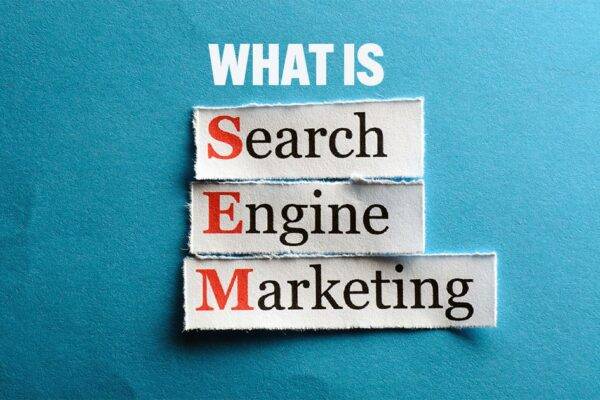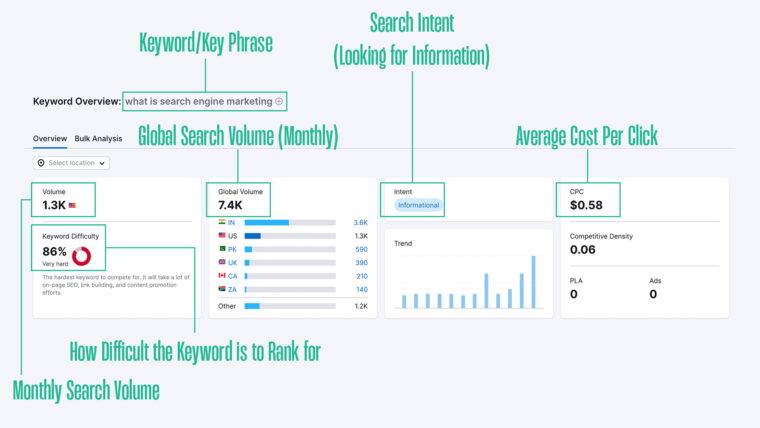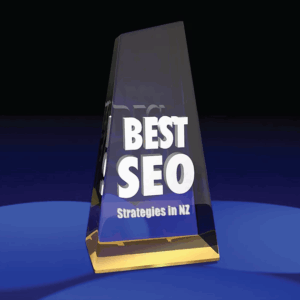What the heck is Search Engine Marketing (SEM)??

Filters
Results
At Back9 Creative we often talk about the ever-evolving landscape of digital marketing. The fact of the matter is that staying ahead of the game is crucial for businesses. Especially the one’s looking to boost their online presence. And as a result, drive [targeted] traffic to their websites. One term that can surface is “Search Engine Marketing” (SEM). So, what exactly is Search Engine Marketing, and why is it a game-changer for businesses in the online sphere?
Basically, Search Engine Marketing (SEM) is aimed at enhancing a website’s visibility on search engine results pages (SERPs). As opposed to (SEO) Search Engine Optimisation, this is done in the case of SEM through paid advertising. The primary goal is to increase a website’s visibility when users search for specific keywords related to the business or its products and services. One of the key components of SEM is Pay-Per-Click (PPC) advertising. This includes Google Ads. Which in short, is where advertisers bid on certain keywords, and they only pay when their ad is clicked.
Are SEO and SEM different things?
Yes, Search Engine Marketing (SEM) and Search Engine Optimization (SEO) are distinctly separate. However they are also inextricably linked. While both aim to enhance a website’s visibility on search engines, they employ quite different strategies.
What if we were to put SEM and SEO Head-to-Head? Check out SEO vs SEM: The Ultimate Showdown.
Search Engine Marketing (SEM)
involves paid advertising, such as Pay-Per-Click (PPC), to increase immediate visibility through sponsored ads on search engine results pages. On the other hand,
Search Engine Optimisation (SEO)
SEO focuses on organic methods to improve a website’s ranking, involving techniques like optimising content, improving site structure, and earning backlinks. In essence, SEM uses paid strategies for instant results, while SEO focuses on organic, sustainable methods for long-term visibility and credibility in search engine rankings.
The heart of SEM lies in leveraging search engines like Google, Bing, and Yahoo to connect with potential customers actively searching for products or services. Here’s a breakdown of the key components that make up Search Engine Marketing:
Paid Search Advertising:
SEM prominently features paid search advertising. Advertisers bid on keywords relevant to their business, and when users search for those keywords, the ads appear at the top or bottom of the search results page. This immediate visibility ensures that businesses are at the forefront when potential customers are actively seeking information.
Keyword Research:
A crucial aspect of SEM is identifying and targeting the right keywords. Through extensive keyword research, businesses can pinpoint the terms and phrases that potential customers are likely to use when searching for products or services. This strategic approach ensures that the ad reaches the intended audience. Not only that, it ensures you will also understand the search volume, keyword difficulty and cost of these keywords. Therefore you can budget accordingly too.

Ad Copy and Landing Pages:
Crafting compelling ad copy and designing effective landing pages are vital for the success of SEM campaigns. The ad copy should be concise, persuasive, and relevant to the user’s search intent. That means you also need to understand the search intent. And this is where the Keyword research is also very important. The 4 main types of search intent are:
- Navigational intent: Users want to find a specific page (e.g., “Back9 Design”)
- Informational intent: Users want to learn more about something (e.g., “what is Search Engine Marketing (SEM)”)
- Commercial intent: Users want to do research before making a purchase decision (e.g., “best coffee maker”)
- Transactional intent: Users want to complete a specific action, usually a purchase (e.g., “buy lawnmower”)
All the while, the landing page should provide a seamless and user-friendly experience, leading visitors to take desired actions, such as making a purchase or filling out a form.
Analytics and Optimisation:
SEM is an iterative process that requires constant monitoring and optimisation. Analysing performance metrics, such as click-through rates, conversion rates, and return on investment, allows businesses to refine their strategies. Continuous optimization ensures that SEM efforts remain aligned with business goals and deliver maximum value.
Do you need Search Engine Marketing (SEM)?
In short, if you want to be found online, get more leads and sales then YES! You need SEM. Here’s 9 Signs you need help with SEM. Search Engine Marketing (SEM) is a dynamic and results-driven approach to [online] advertising. By strategically placing businesses at the forefront of search engine results, SEM not only increases visibility but also directs high-quality traffic to websites. As the digital landscape continues to evolve, embracing SEM has become a cornerstone for businesses seeking a competitive edge in the online marketplace.
Search Engine Marketing (SEM) is a dedicated strategy in itself and as such is an investment. That means it does come at a cost, however, if done well, by an expert – you should and will see long-term results.






